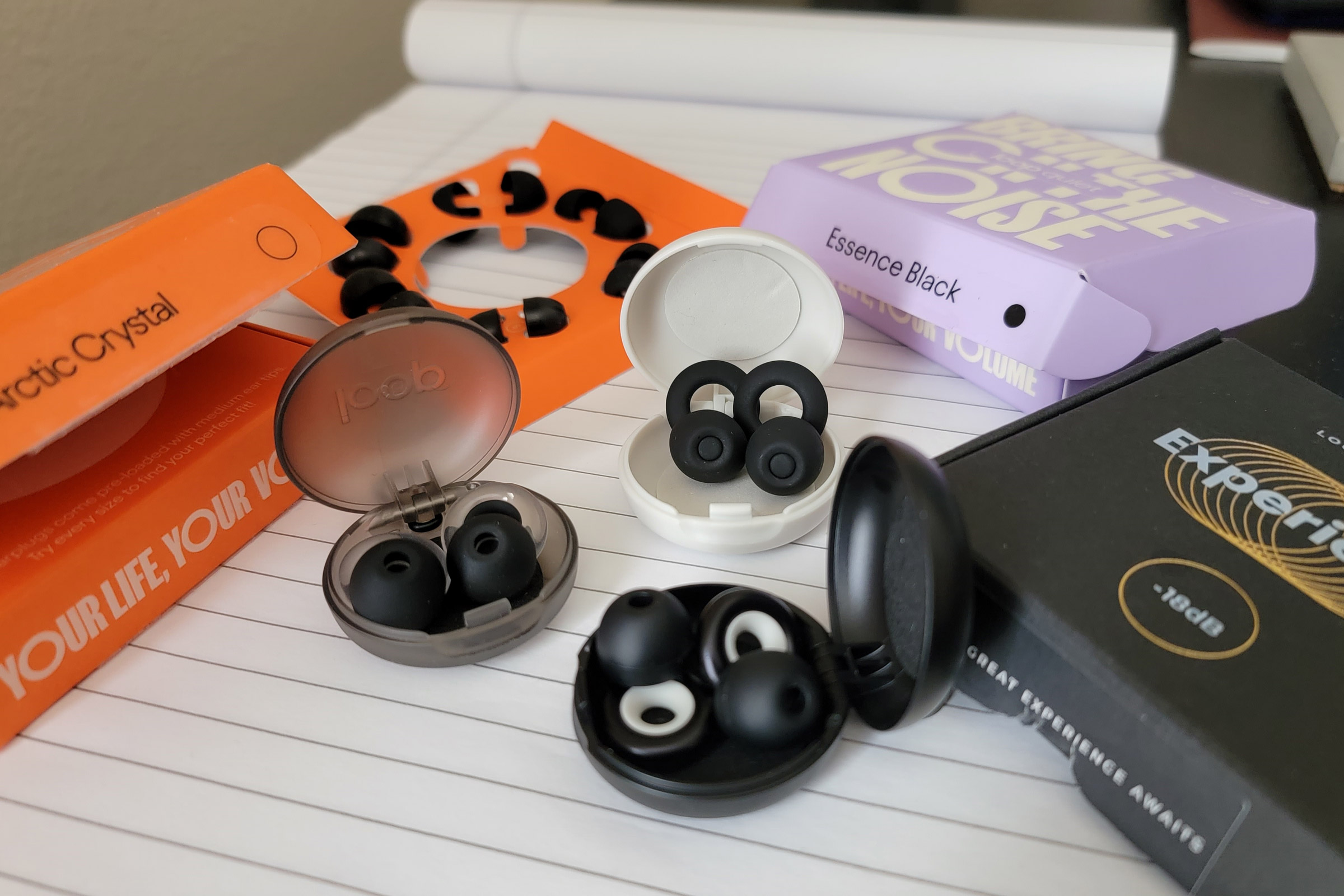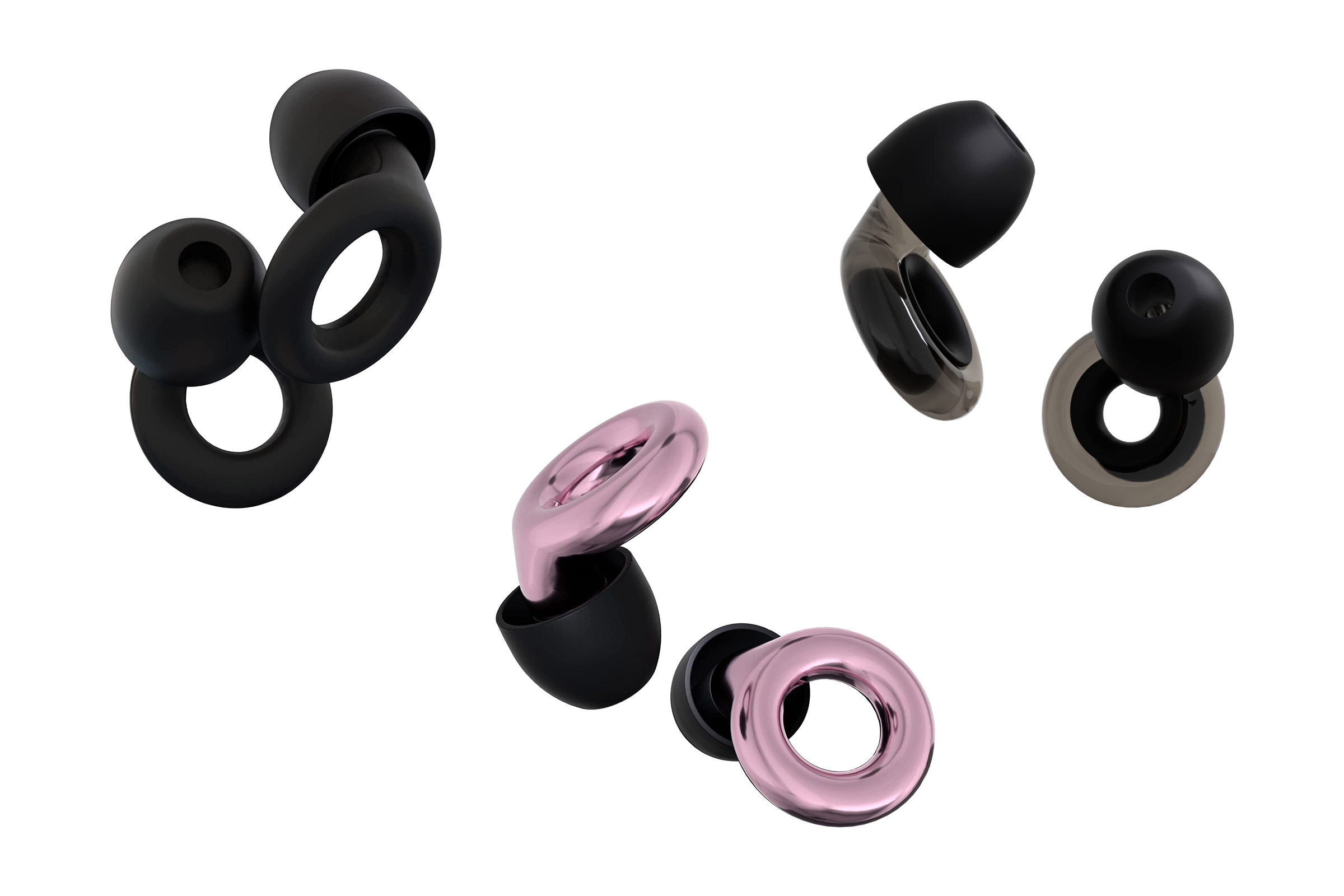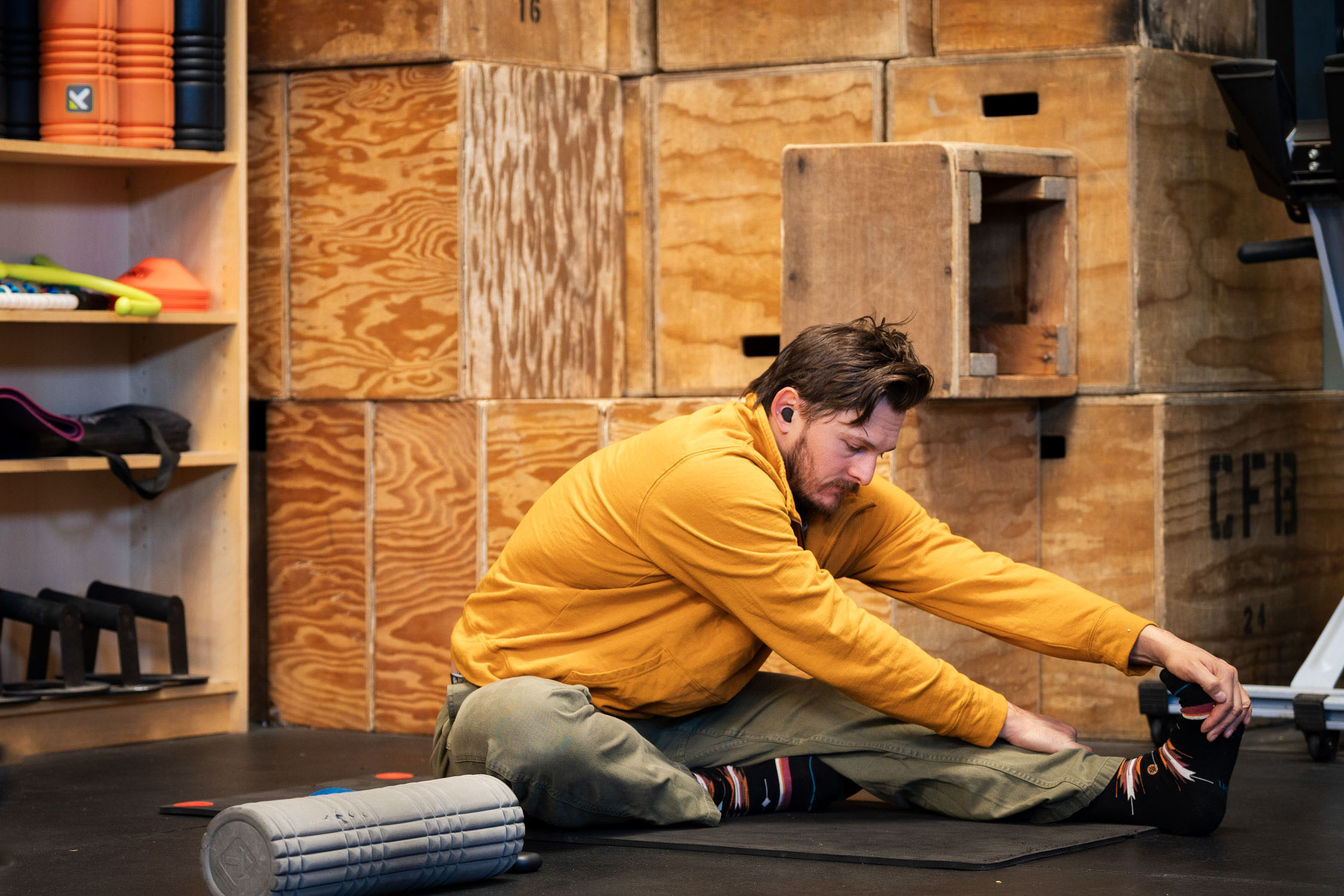I know what you’re thinking — “Earplugs? Really? What does that have to do with the outdoors? GearJunkie, you’ve gone too far!”
La, la, I can’t hear you, my ears are swaddled in comfort. In all seriousness, this is a valid question: Why is a site that focuses on live-loud adventure devoting space to an accessory that turns down the volume? It’s something that my editors and I considered when Loop, a maker of high-end boutique earplugs, reached out with a proposal for testing.
But think back to your last camping trip. If you’re at all like me, you enjoy picking a spot near the water. Unfortunately, these sites are generally popular with two nuisances: frogs and your fellow campers. When it comes time to crawl into your sleeping bag, the noise can quickly turn from a peaceful background murmur to an up-all-night social roar.
This is just one instance where a little bit of hearing protection could go a long way. Think of concerts, chainsaws, motorcycling, or the horrors of airplanes and airports. In each case, earplugs can make the experience not only more enjoyable but safer for your tympanic membranes.
With this in mind, Loop sent along three sets for testing: Quiet ($25), Experience ($35), and Engage Plus ($45). Each of these comes with a different level of sound deadening, along with interchangeable tip sizes. But how much difference can a few millimeters of rubber and plastic really make? I swapped these buds in and out of my ears for a week, and came away with some quietly surprising results.
In short: Loop makes some of the most comfortable, interesting, and attractive earplugs I’ve encountered. Each set offers its own advantages and intended use, from drowning out cicadas to the spikes of a concert amp. The price of entry isn’t cheap, but for their quality and ease of use, Loop’s Quiet, Experience, and Engage are, quietly, a screaming deal.
- Sound reduction: 16-27 dB
- Materials: Plastic, silicone, foam
- Tip sizes: Extra-small, small, medium, large
- Lifespan: 5 years (earpiece), 6 months (tips)
- Origins: Designed in Belgium, made in China
Pros
- Ergonomic and attractive design
- Multiple tips included
- Reusable nature
- As-advertized performance
Cons
- -27 dB won't drown out loudest sounds
- Eventual need to replace tips
- Somewhat high cost of entry
Loop Earplugs Review: Quiet, Experience, Engage
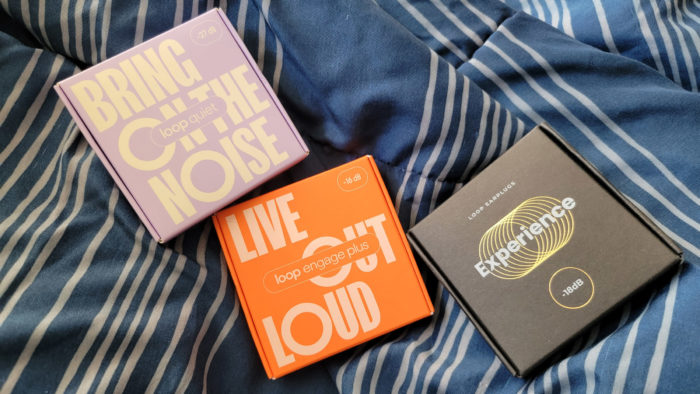
Choosing the Proper Model and Fit
As mentioned above, Loop’s earplugs come in three models. The Quiet offers the most affordable of the bunch and also comes with the highest sound-deadening — up to 27 dB of noise reduction.
Meanwhile, the Engage invites you, rather aptly, to “take the edge off while staying engaged … Thanks to a newly engineered filter” and 16 dB of reduction. And the Experience focuses more on security in-ear with a softer, all-silicone construction. It also offers a slight insulation boost, starting out at 18 dB.
While the Quiet model seals off its namesake loop with a plug, the Engage and Experience pack an additional party trick: a “patented acoustic channel” that comes with either mesh or a combination of mesh and membrane, respectively. The intention here is to provide more of a filtered audio experience, while keeping conversation and important noises unhindered.
Loop offers a list of uses for each model (social gatherings, focus, travel, etc.). And the company’s website offers a helpful quiz, which can help you determine the best model of earplugs for you.
There are multiple colors available, and even limited editions such as the Experience Iridescent, if you’re looking to up your fashion quotient. Whichever version you choose, each model comes with four interchangeable silicone tip sizes, ranging from extra-small to large.
How Well Do They Work?
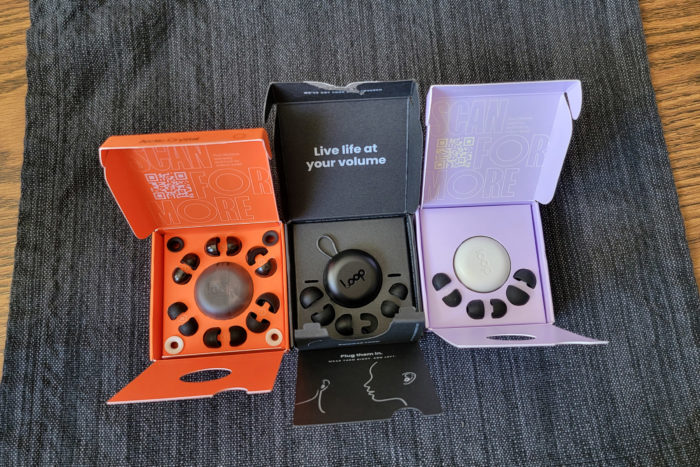
Full disclosure: Loop’s products are right up my alley. I spent more than 8 years working in high-decibel industrial environments, where hearing protection was often required. But even in my daily life, I find earplugs to be a necessity. Whether it’s for travel, at the gym, or tuning out the folks in the neighboring booth at a restaurant, I like my peace and quiet. I even sleep with them in, more often than not.
With that said, I’m not going to pretend I utilized a highly scientific method of testing. I swapped each set in and out of my canals while playing loud music, surrounding myself with ambient noise, and walking about in public. What I can say for certain is this: Each of Loop’s models are comfortable, easy to insert and retrieve, and live up to their promise of silence.
The carrying cases are a nice touch, and Loop even offers Plus versions of both the Experience and Engage. These come with an additional three sets of soft foam tips and two sets of an add-on called Loop Mute, circular inserts that fit into the inner ring of the earplugs, adding an additional 5 dB of deadening. And as gimmicky as it might sound, they function exactly as advertised.
While I didn’t try them out on a motorcycle, they’re wonderful on the treadmill. I experienced not a single trace of slippage, and they managed to tune out surrounding din while still allowing you to hear when you’ve been directly addressed.
A Tent, a Leaf Blower, and 3 Sets of Plugs
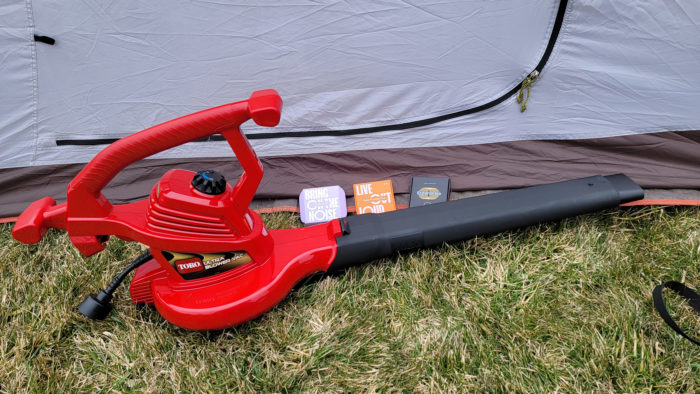
Above, I mentioned the usefulness of earplugs while camping. And while I’d have loved to take them out for a weekend among the sounds of squirrels and loons, that winter/spring transition is a pretty gross time in Wisconsin.
But how could I recreate the sounds of aggressive wind, noisy neighbors, and the ever-present whine of a generator?
Thankfully, a friend of mine had a solution. Or rather, a cleared space on their suburban lawn, and access to an electric leaf blower. I set up my tent, crawled inside, and asked them to blast away for several minutes from various angles and distances.
Oh, and for the record, the rain fly was installed during the tests (blame me for forgetting to take a picture until later).
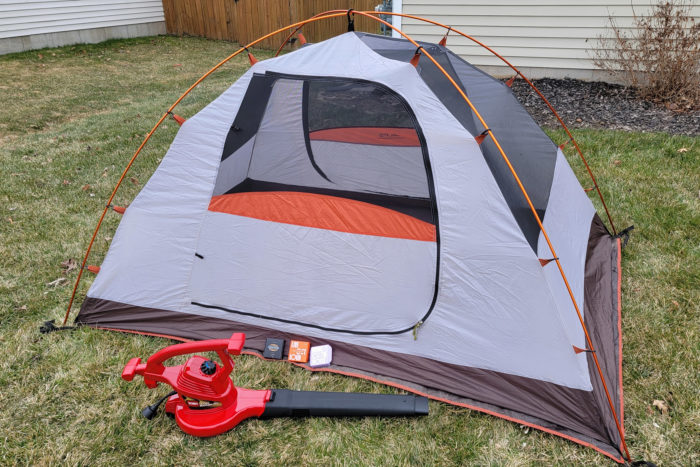
Hidden away in the tent, the experience was surprisingly similar to that of a windy, crowded campground. Not only did the leaf blower simulate the experience of a breeze snapping at the rain fly, it managed to produce a drone consistent (if higher pitched) than your average RV generator. Think “air mattress pump,” and you get the idea.
Also, the loud music from a nearby neighbor was very reminiscent of a party from neighboring campsites.
Overall, the Loop earplugs did a decent job of filing the more aggressive edges off the sound. The Quiet models were the best of the bunch for sheer isolation, as they managed to bring the overall din down to a nappable level, especially with the addition of the Mute accessories.
The Engage and Experience filtered out the music and traffic from the street, but didn’t do as well with the closeup whine from the blower. The wind itself, no problem, but that high-pitched whine is a little harder to scrub.
They did, however, manage to dull the sharp zing of the zipper sounds from the tent doors and rain fly.
Reduce, Reuse, Reverb
There’s also the environmental factor to consider, and I’m not just talking about the dulling of ambient noise. While standard, prepackaged earplugs are great for protection, I try to avoid single-use items as often as humanly possible. This is another hook for Loop.
Per the back of the respective boxes, each of the company’s models features an estimated 5-year lifespan. They’re also easy to clean with a damp cloth, though users are cautioned to avoid harsh chemicals or submersion.
The tips are a bit of a different story. Loop recommends changing these every 3 to 6 months for hygienic reasons. Still, that’s a heck of a lot longer than a pair of the orange foam monsters I’m used to, and I’d bet a little care would keep them viable for longer.
Conclusion: Loop Quiet, Experience, and Engage Earplugs
As silly as the idea may sound at first, Loop offers an outstanding, adventure-friendly product. The earplugs are packable, reusable, and even rather stylish for something you shove in the sides of your head.
If you’re looking for something to help keep nature, your fellow campers, or the mad hoards of the vox populi away, each of the three models here are a fine and comfortable choice.
Because if you’re sleepless or stressed by the time you get to the trailhead, then you’re not having as much fun as you should be.
